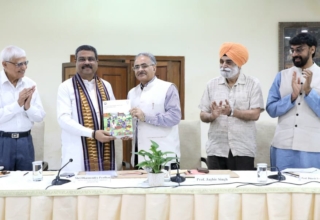The much relied upon school data collected by District Information System for Education (DISE) of NUEPA and put to use for policy, planning and information may after all not be very true according to a study done by Centre for Policy Research study. The study while analyzing monitoring systems in 166 schools spread over five states of Odisha, Himachal Pradesh, Delhi, Bangalore and Rajasthan found glaring divergence even in toilet and drinking water reportage. The research on monitoring systems in education was conducted by a three-member team lead by senior fellow Kiran Bhatty who has previously served in NCPCR’s monitoring division. Placing the findings within a framework of institutional analysis, the study highlights incoherence in the bureaucratic structures of monitoring, lack of ownership of roles assigned to the monitors, and lack of community embeddedness at lower levels of the bureaucracy as factors contributing to ineffectual monitoring.
According to Bhatty the multiplicity of formats from various agencies including national, state and local agencies doesn’t go well with grassroots and blamed the SSA culture of data collection for the failing monitoring system in schools. “While at state level the engagement with review and monitoring processes is encouraging, however, those at the bottom (mostly teachers) filling the repetitive information feel mentally tired, frustrated and wary of having to filling data formats (order of the day). School inspections are being neglected. Somehow the top officials have also subscribed to this data filling monitoring and there is a sort of pressure from top to make data available in particular formats,” she says. According to her there is a need to widen the scope of conversation for accountability in the system.
The researchers while arguing for rationalizing of monitoring formats also highlighted the fact that though nationally the NCERT’s monitoring tool QMT, which was revised in 2011 is a comprehensive and effective monitoring mechanism available, almost everyone is unaware about it. The study also noted the frustration of CRC (Cluster Resource centre) workers, who are not taken seriously by teachers. Similarly, the leadership role of head teacher, which is very critical for a school is not given a serious thought and head teachers are finding themselves in a bit left out in this new monitoring arrangement. According to Bhatty the system is working as such that higher ups don’t assume any responsibility and blame is instead directed downwards. And last in the chain the community of parents is also at the receiving end as teachers put blame on them for poor performance.
At the same time, the research team also came across some success stories as well and complimented Odisha for having developed a good reviewing format thought those filling it need to be trained. Himachal Pradesh schools have also taken lead in involving mother associations and SMCs.
-
Gopi Birla Memorial School Mumbai inaugurates Aerobay STEAM Innovation Lab in tribute to founders legacy
In a heartfelt celebration of heritage, purpose, and forward-looking education, Gopi Birla… -
Dubai emerges as a popular study abroad destination for students from India & other countries: Leverage Edu Report
The findings, drawn from its platform activity across the UAE (United Arab Emirates) and w… -
Generation India Foundation and UPSDM announce partnership to enhance Youth Employability in UP
Generation India Foundation (GIF), Gurgaon, a non-profit organization founded by McKinsey …
Load More Related Articles
-
Gopi Birla Memorial School Mumbai inaugurates Aerobay STEAM Innovation Lab in tribute to founders legacy
In a heartfelt celebration of heritage, purpose, and forward-looking education, Gopi Birla… -
Dubai emerges as a popular study abroad destination for students from India & other countries: Leverage Edu Report
The findings, drawn from its platform activity across the UAE (United Arab Emirates) and w… -
Generation India Foundation and UPSDM announce partnership to enhance Youth Employability in UP
Generation India Foundation (GIF), Gurgaon, a non-profit organization founded by McKinsey …
Load More By Editorial team
-
National Curriculum Framework for School Education (NCF-SE) Released
Union Minister for Education and Skill Development & Entrepreneurship, Dharmendra Prad… -
M.A. Programme for Global Environmental Humanities by RV University in offing
RV University part of Arctic University of Norway led global environmental humanities proj… -
In a major reform, UGC releases revised ‘Curriculum and Credit Framework for Undergraduate Programmes (CCFUP) aligned to NEP 2020
In accordance with the NEP 2020, University Grants Commission (UGC)—the higher education r…
Load More In Education News
Click To Comment
You must be logged in to post a comment.
Check Also
Gopi Birla Memorial School Mumbai inaugurates Aerobay STEAM Innovation Lab in tribute to founders legacy
In a heartfelt celebration of heritage, purpose, and forward-looking education, Gopi Birla…








